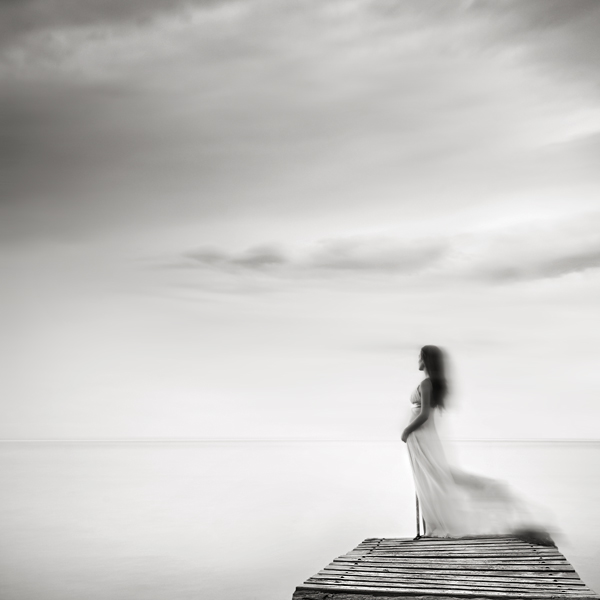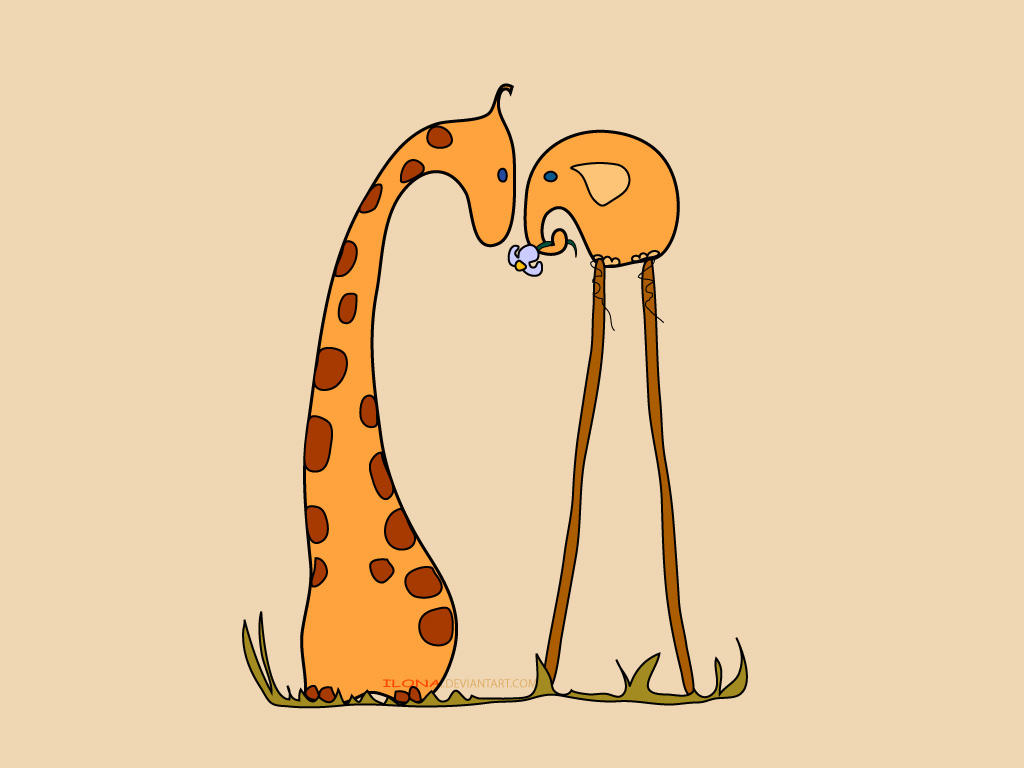Here is the original art work, as you can see I still keep forgetting to mirror the image. I'm just going to say it's part of my signature technique now ;)
I used the same technique as before, converting the picture into grey-scale and saturating the edges using photoshop. Choosing the colors was a bit more difficult. The original picture has a really serene, washed-out feeling to it. I love this, but wanted to go with something a bit more vibrant, while still maintaining the mystique of the original. The other hard part was choosing the patterns for the fabric, as they needed to be small enough to not detract from the rest of the piece. This greatly restricted the choices I had, and I didn't manage to find the perfect matches for the tree and the fore-ground grassy hill. The tree was too dark, and the grass wasn't quite the right shade and didn't have a prominent pattern. In the end I just had to go with what I could find, as I had a deadline for the quilt.
The piecing for the quilt is very simple. The large pieces are all raw-edge applique: The tree, sun, dresses and hills. I did want to keep the stiffness down though, so the sun and hill pieces surrounding the girl were cut with minimal overlap. The sun is actually comprised of three separate pieces, and it was a bit difficult to line up properly, as I didn't leave enough overlap
In the end, I had to include a slight misalignment on the right hand side. I managed to do it in the least noticeable spot though (in my opinion). Once all the pieces were placed and ironed, I then went back and machine blanket stitched the edges using matching thread so it wouldn't be visible. The black edging covered most if this, and it added to the stability. The extra sewing did fray the edges a bit though, and if I had to do it again I would either use thicker black edging, or consider satin stitching it.
The next step was the embroidery. I started with the girl's hair, as this would be the most difficult part to do. And it was. I ended up having to cut out and redo the hair twice until I found a technique that I liked. What worked eventually was to do the light color first completely, then go back over and pick out the darker sections to highlight the light points. This proved better than doing the opposite. The plaits were particularly hard, as each small stitch needs a different direction and position to portray the segments. The whole thing didn't come together until the black was added either, and it was hard to vision what it was going to be like. I was pretty happy with the result though.
The next step was to do the 'skin' and the doll's hair. I did the hair first, as it's easer to fill-in the skin to a stop point. Once again, nothing really formed until the black was added, and the hands were particularly difficult to get right, but I think the shapes ended up coming out well.
The last bit of embroidery to do was the mushrooms. These were really easy to do, and lots of fun to see shaping up. I'm actually thinking of doing a whole mushroom piece at some point in the future, or at least add mushrooms into future endeavours :)
After all the embroidery was done, I did the black edging for all the sections, and set out to do the quilting. I wanted to see a hint of the quilting on the front, but not for it to detract. To this end I chose threads of similar color to the fabric sections, with a slight gradient difference. Unfortunately I think I matched the color too closely to the green fore-section, and the quilting is difficult to see.
You can see how the parts look from the front in the previous pictures, but here are some more details of the back to fully see the stitching. I didn't use any traced patterns for the piece, mainly because I tried chalk pencils and fading pens, but nothing came up clear enough on the fabric for me to follow.
The forefront had a larger flower/leaf pattern seen above. I really wish I had done this in a more contrasting thread, but you live and learn. The pattern itself was swirly and fun, but it was hard to see as I was stitching it, which made it harder - I stitched this on the front as I needed to see where the boundary was for stopping. It was very difficult to determine where the pattern stopped and started without the contrast. Overall though, this was the first free-motion I did using my new machine and it was so much fun!
I chose a daisy-chain pattern for the middle hill, to give a bit more flowery structure to the section's fabric. and I loved how it turned out! It's definitely the work of a beginner, but I was happy. This time I first stitched the boundary from the front, then turned the piece over to do the stitching from the back. This gave me a better contrast for seeing the stitching, and I was able to do a better job following the pattern. You can also see some of the bark pattern used on the tree to the left here. That proved a bit difficult due to the movement of the tree, but was still fun to do. The last hill was completed with simple stippling, as it already had a prominent fabric pattern.
This is the entire back. The sun and sky were easy to do, and I tried to use the gradient of the lines on the sky to represent the setting sun. If you want to see this in detail, right-click on the picture and choose "open in new tab" or window. You can then click to view a magnified view. Same for any of the above pictures.
Overall this was a great piece to use for practicing my free-motion skills, and was a lot of fun to create!







































